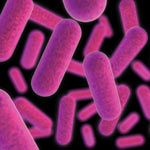
Meningococcal disease is an extremely serious infectious disease that can kill in a matter of hours. Meningococcal can cause death or serious damage terrifyingly fast, and the risk of this is compounded by the fact that the disease can be difficult to diagnose early.
What causes it?
Meningococcal disease is caused by bacteria and is passed on through saliva. These bacteria can be spread through sneezing, coughing, kissing and sharing food or drink. Places where people are in close contact, such as day-care centres, school camps, parties and nightclubs, make it easier for the bacteria to spread.
Who is at risk?
Those most at risk of contracting meningococcal disease are children up to the age of five, teenagers and young adults aged 15 to 26. It’s essential that parents, teachers and child carers learn to recognise the symptoms early and act fast if symptoms occur.
Smokers and passive smokers are also more at risk.
What are the symptoms?
One of the reasons this disease is hard to identify is that it can appear in several different forms, depending on which part of the body the bacteria invade. There can be meningitis or septicaemia, or a combination of both.
Meningitis is an inflammation of the lining of the brain and spinal cord. Symptoms include severe headache, fever, fatigue, stiff or painful neck, sensitivity to light or convulsions.
Septicemia is blood poisoning. This is caused by the bacteria entering the bloodstream and multiplying, damaging blood vessels and causing bleeding under the skin. This causes a pinprick or purple bruise-like rash. Symptoms of septicemia include fever, fatigue, vomiting, cold hands and feet, cold shivers, severe aches or pain in the muscles, joints, chest or abdomen, rapid breathing, diarrhoea and – in the later stages the distinctive rash.
Early symptoms of meningococcal disease can be similar to the flu or a hangover. Alternatively, it could start with a sore arm or leg, an aching joint or pains in the chest or stomach. Symptoms can also include nausea, vomiting, fever, dizziness, tiredness, sensitivity to light, headache, twitching or convulsions, aches and pains and disorientation.
It’s very important that you are aware of all possible symptoms. Don’t wait for a rash to appear – see a doctor straight away.
What can happen?
About 700 Australians a year catch meningococcal disease. Although the majority of people who catch meningococcal disease recover fully, up to 10 per cent of those infected will die, and around 20 per cent will have permanent disabilities such as brain damage, sight and hearing problems, liver and kidney failure, scarring caused by skin grafts and loss of fingers, toes or limbs.
What can I do to prevent it?
There are vaccines available, but they don’t protect against all strains of the disease. That means it’s important to take other precautions. Encourage children not to share food and drinks, or other things that may have come into contact with another child’s saliva. Also, don’t share toothbrushes, cigarettes, lipstick or lip gloss, straws or mouth guards.
For more information about meningococcal disease, go to www.meningococcal.com.au






Comments are closed.